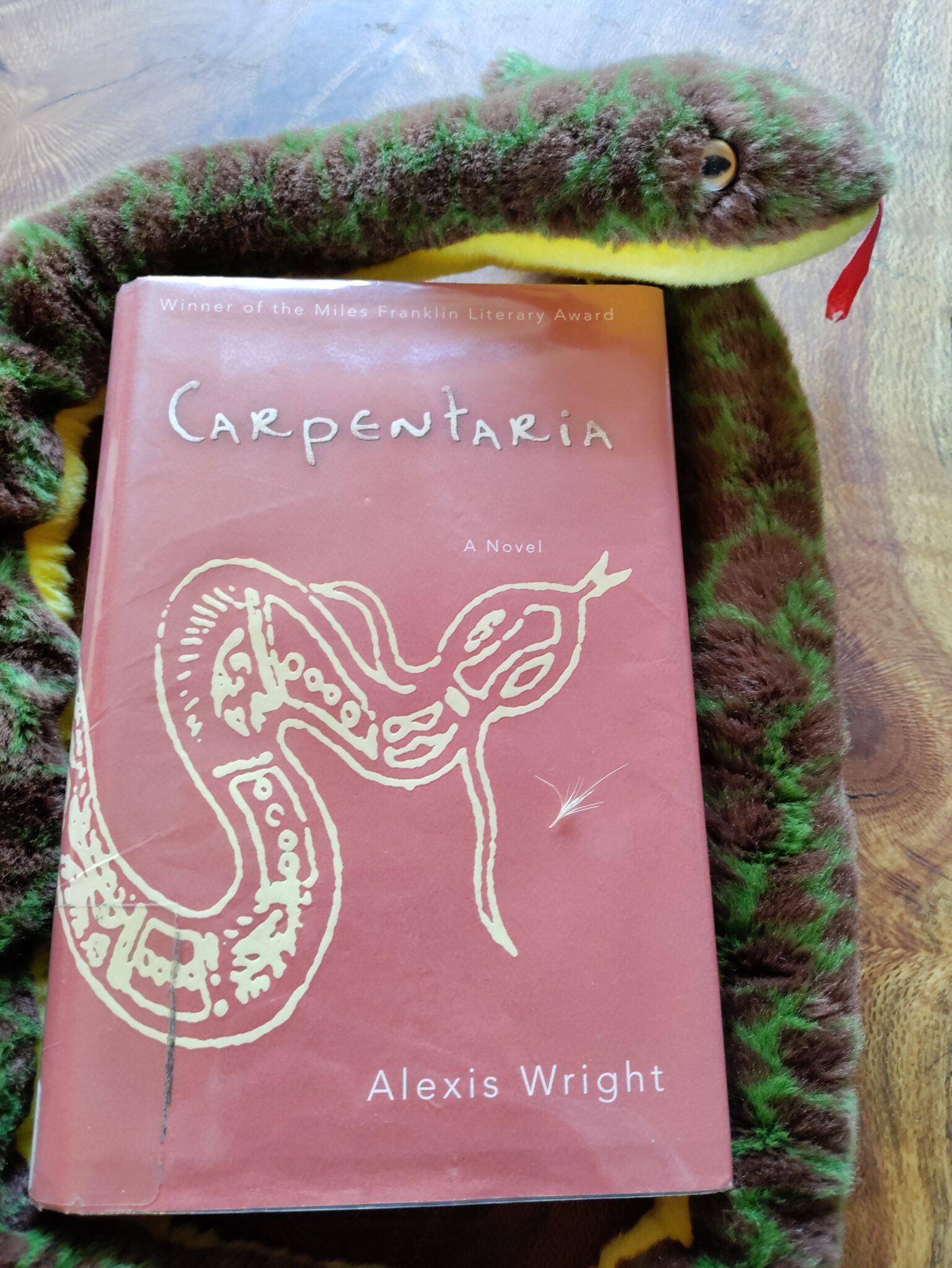Following Armenia, the next stop in my reading around the world tour is Australia.

Australia
I almost skipped Australia on my reading around the world challenge. Compared to some other countries in this challenge, Australia is familiar territory. I haven’t gotten there myself yet but I know people who are from there or have been there. I’ve watched countless movies from or about Australia, and I’ve read more than a few books from Australian authors. Geraldine Brooks is one of my favorite writers, and I’m currently working my way through Kerry Greenwood’s Phryne Fisher mysteries (and mystery isn’t even one of my favorite genres). But when I thought about my selection criteria for the challenge, I realized I have not read anything by an Australian author who meets them.
Choosing the Book
For each country, I try to choose a novel set in the country that is written by an author who:
- Is from that country
- Lived there while writing it
- Wrote in the language of the place
- Is female
- Is indigenous rather than descended from colonizers, where that distinction is relevant
A Year of Reading the World used Tim Winton’s Cloudstreet. That didn’t seem like what I was after. So I googled aboriginal women authors, and Alexis Wright popped up at the top of the list. Alexis Wright is a member of the Waanyi nation of the southern highlands of the Gulf of Carpentaria in Queensland, Australia (the same state my childhood pen pal lived in). I searched my local library catalog for her books, and they had the novel Carpentaria.
Carpentaria
Bibliocommons descriptionIn the sparsely populated northern Queensland town of Desperance, loyalties run deep and battle lines have been drawn between the powerful Phantom family, leaders of the Westend Pricklebush people, and Joseph Midnight’s renegade Eastend mob, and their disputes with the white officials of neighboring towns. Steeped in myth and magical realism, Wright’s hypnotic storytelling exposes the heartbreaking realities of Aboriginal life.
I’m not gonna lie, this book was a challenge. It wasn’t a slog exactly, but it made me feel like a little kid reading an adult book. There was something about the language that felt slippery. My brain just couldn’t hang on to the words long enough to make sense of it. For the first couple hundred pages, I wansn’t really sure what was going on – or even if anything was. I couldn’t place the story in time (turns out it was contemporary to its publication in the early 21st century).
Adding to the challenge was the way the story passed back and forth through the membrane between surrealism and magical realism. It was only when old Norm Phantom began his Old Man and the Sea adventure that I started to be able to pick up on the concrete story lines. Although I continued to spend too much energy trying to parse “fact” from “metaphor” in the events of the final 300 pages, once I understood the central conflicts – a colonial land grab causes further divisions in a tiny, segregated town and results in an industrial mine; a Monkeywrench Gang type of folk hero resists the mine; murders are committed, and magical metaphorical rescues are made.
Conclusion
The magical surrealism was part of the challenge but at the same time, constituted much of the appeal for a story that is, unfortunately, too common and mundane regardless of its existential importance. If you Google Carpentaria, you’ll get a map of a gulf in northern Australia. But Wright’s town of Desperance felt more like Marquez’ Macondo than a real place, elevating the story from the mundane.
Reading Carpentaria not only accomplished the goal of exposure to different writing styles. It also made me aware of global trends that we are missing out on here in the US.
While our MFA programs keep churning out literary novels full of the existential crises of middle-class, middle-aged men ruminating over their failed marriages (hint: it was banging the secretary), the rest of the world is having existential crises over our potential extinction. Mostly this is tied to environmental destruction, but sometimes it’s about cultural degradation resulting from urbanization and capitalism.
Here in the US, surrealism is generally thought of as a fringe, often whimsical movement that mostly belongs to a moment somewhere in the interwar period and/or the 1960’s. But to the rest of the world, surrealism seems to be the coping strategy for enabling an exploration of the incomprehensible horror of not just individual death but the extinction of human life itself.
So far in this challenge, I’ve read nine books. Seven of them were novels. Six of those were published in the current century. Of those six, three were built on themes of environmental destruction, while four were surreal or magical realist. That could be bias effect, since I lean towards both of those things. But considering the criteria I use to select Reading Around the World books, and the fact that I don’t always know what I’m in for when I pick them, I don’t think personal taste can account for it. Also, I still mostly read books published in the US and I haven’t read any surreal environmentalist American novels lately. America just doesn’t seem to be on the same page as the rest of the world. It makes me think of that saying, “If you can’t figure out who the asshole in the room is, it’s probably you.”
Details
Carpentaria: A Novel, 2009
Alexis Wright
English
Atria Books
516 pages



About the author